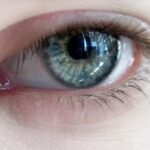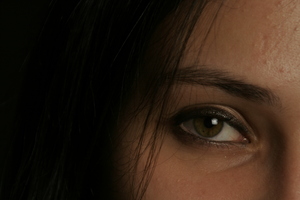Recently my son complained of headaches and a decrease in his vision. He said his eyesight seemed to be getting worse. He had begun to notice a diminished ability to see as far or as good as previously experienced. He is eighteen years old and in college. He has worn glasses since the ninth grade. Routinely, he has an eye exam every year in August. From the time he began to wear glasses until now, his prescription has changed only once.
This year, during his exam, the doctor discovered blood accumulating behind the right eye. He immediately contacted a Retinal Specialist and made an appointment. In less than one week, we were at the Specialist office. A diagnosis was provided about one hour later. My son has Coats Disease. This was causing his problems of decreased acuity in vision. The urgency in setting an appointment and getting a diagnosis is based on the importance of maintaining the eye and vision.
Coats Disease: What is it?
Coats Disease is a very rare disorder, which generally affects only one eye. Prolonging treatment can result in complete blindness in one eye or the eye can become completely detached from the socket. Coats Disease was thought to only occur in young males. The initial warning occurs within the first decade of life. Vision impairments or issues begin to be apparent. At present, research indicates a genetic component as the cause of this disease. Coates disease is present in the genes at birth and only affects males. However, the disorder is not hereditary.
Coats Disease: Symptoms
Blurred vision more advanced in one eye than the other, deterioration of sight in central or peripheral vision, flashes of light or floaters and some individuals experience hallucination. The reason for the hallucinations is due to beginning retinal detachment and foreign fluids. When this begins to occur, the fluids begin to interact with brain photoreceptor’s on the retina. Another symptom is the appearance of a ‘yellow eye’ in photos. The yellow eye is caused as the light from the camera reflects off the deposits of cholesterol at the back of the eye. Lastly, the individual may begin to feel pain due to internal pressure. The fluid draining from the detached capillaries causes internal pressure and swelling.
Coats Disease: Things to Look For
The onset of the disorder is indicated when your child begins to lose vision. The gradual decline is due to an abnormal blood vessel at the back of the eye which causes gradual loss of vision. Blood leakage releases cholesterol, which begins to be deposited behind the eye. These deposits cause damage to the retina. The gradual decrease in vision is because the disorder tends to progress slowly decreasing sight gradually until it becomes more advanced. At the most advanced stage, if no treatment has been obtained, retinal detachment can occur. If treatment is not obtained, prior to the advanced stage detachment of the retina, the child can experience glaucoma, atrophy and cataracts.
Coats Disease: Treatment
If caught in the early stage, Coats disease can be treated. The disease has been successfully treated with Laser Surgery and Cryotherapy. Each method is used to freeze the abnormal or damaged blood vessels. By performing one of the treatments, in some cases both, physicians have been able to prevent the continued progression of the disease. Physicians must study the eye to ensure the leaking capillaries are not clustered around the optic nerve. If this is the case, Laser surgery or Cryotherapy may cause further damage, which could result in permanent blindness in the affected eye. In some cases, the disease has not progressed further than the initial blurred vision. However, physicians do not recommend waiting for this to happen naturally. The chances are slim to none. Further progression to the point where there can be no prevention or successful treatment will result in permanent retinal detachment. In other cases, the eye has been removed to prevent pain or further complications to the good eye or body.




